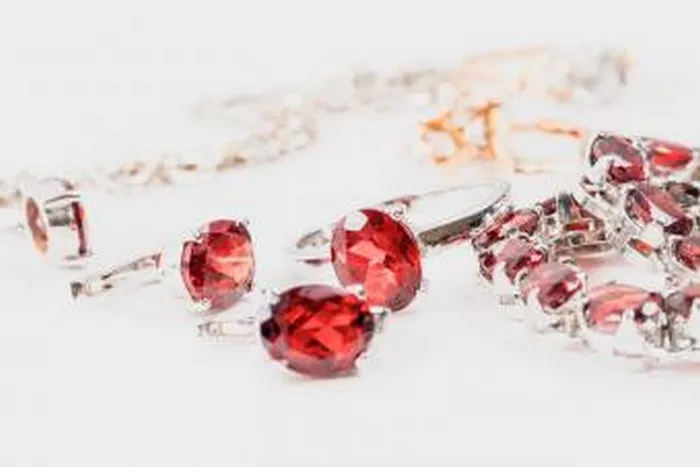Rubies, with their captivating red hue, have fascinated humanity for centuries. As one of the most sought-after gemstones, rubies are synonymous with luxury, passion, and power. However, not all rubies are created equal. The term “natural enhanced ruby” often surfaces in the gemstone market, leading to curiosity and sometimes confusion among buyers. This article delves into what a natural enhanced ruby means, its characteristics, enhancement methods, and implications for buyers.
Understanding Rubies
Natural Rubies
Natural rubies are formed under specific geological conditions over millions of years. They are composed of the mineral corundum (aluminum oxide) with trace amounts of chromium, which gives them their distinctive red color. The presence of other trace elements can cause variations in hue, saturation, and overall appearance.
Criteria for Natural Rubies
Color: The most prized rubies exhibit a vibrant, pigeon blood red.
Clarity: While inclusions (internal flaws) are common in natural rubies, the fewer and less visible they are, the more valuable the ruby.
Cut: The cut of a ruby affects its brilliance and overall appeal.
Carat Weight: Larger rubies are rarer and more valuable.
Enhanced Rubies
What is an Enhanced Ruby?
An enhanced ruby is a natural ruby that has undergone treatment to improve its appearance, durability, or overall value. Enhancements are common in the gemstone industry and can significantly impact the stone’s market value.
Why Enhance Rubies?
Enhancements are used to:
Improve Color: Intensify the natural color of the ruby.
Enhance Clarity: Reduce the visibility of inclusions.
Increase Durability: Make the ruby more resistant to damage.
Common Ruby Enhancement Methods
Heat Treatment
Process: The ruby is heated at high temperatures (around 1800°C) to enhance its color and clarity.
Effects: Heat treatment can remove impurities and improve the ruby’s color consistency.
Permanence: This treatment is generally permanent and widely accepted in the industry.
Disclosure: Reputable sellers disclose heat treatment as it is a standard practice.
Fracture Filling
Process: Fracture filling involves filling surface-reaching fractures with a glass-like substance.
Effects: This treatment enhances clarity and can make the ruby appear more flawless.
Permanence: Fracture filling is not permanent; the filling material can be damaged by heat or harsh chemicals.
Disclosure: This treatment must be disclosed to buyers as it significantly affects the value.
Flux Healing
Process: During heat treatment, a flux (a substance that promotes fusion) is used to heal fractures within the ruby.
Effects: Flux healing improves the ruby’s clarity by effectively “sealing” internal fractures.
Permanence: This treatment is usually permanent.
Disclosure: Disclosure is required, as it affects the stone’s value and care requirements.
Surface Diffusion
Process: The ruby is heated with a coloring agent that diffuses into the surface.
Effects: Surface diffusion can enhance color but affects only a thin layer of the stone.
Permanence: This enhancement can wear away if the stone is repolished.
Disclosure: Surface diffusion must be disclosed due to its impact on the ruby’s durability and value.
The Implications of Enhancement
Value Considerations
Natural Untreated Rubies: These are the most valuable and sought-after due to their rarity and natural beauty.
Enhanced Rubies: While enhanced rubies can be beautiful and more affordable, their value is typically lower than untreated counterparts. The type and extent of treatment also affect value.
Durability and Care
Heat-Treated Rubies: These are durable and can withstand regular wear and tear.
Fracture-Filled Rubies: These require extra care. Avoid exposing them to heat, harsh chemicals, or ultrasonic cleaners.
Surface-Diffused Rubies: These need careful handling to prevent surface damage.
Identifying Enhanced Rubies
Professional Gemological Testing
Enhanced rubies can be identified through advanced gemological tests:
Magnification: Reveals inclusions and enhancement evidence.
Spectroscopy: Analyzes light absorption and can detect treatments.
X-Ray Diffraction: Identifies crystalline structure changes due to enhancements.
Certificates of Authenticity
Always request a certificate from a reputable gemological laboratory. Certificates provide detailed information about the ruby’s origin, treatments, and overall quality.
See Also: Does Ruby Have Resale Value?
Buying Tips for Enhanced Rubies
Ask for Disclosure
Always ask if the ruby has been treated and the type of enhancement used.
Reputable sellers will provide full disclosure and documentation.
Understand the Treatment
Learn about the specific enhancement and its implications for durability, care, and value.
Ensure you are comfortable with the treated stone’s characteristics and maintenance requirements.
Price Comparison
Compare prices of treated and untreated rubies of similar quality.
Enhanced rubies should be priced lower than their natural, untreated counterparts.
Consult an Expert
If in doubt, seek advice from a certified gemologist.
Professional guidance can help you make an informed decision.
Ethical Considerations
Sustainable Practices
Consider the ethical sourcing of rubies. Responsible mining and fair labor practices are essential.
Some enhancements can raise ethical questions, especially if not disclosed properly.
Environmental Impact
Mining and enhancement processes can have environmental impacts. Supporting eco-friendly practices helps promote sustainable gemstone industry practices.
Conclusion
Understanding what a natural enhanced ruby means is crucial for making informed purchasing decisions. Enhanced rubies offer beauty and affordability, but it is essential to know the type of enhancement, its permanence, and care requirements. Always seek full disclosure from sellers and consider professional certification to ensure the authenticity and quality of your purchase. With the right knowledge, you can appreciate the allure of enhanced rubies and enjoy their timeless elegance.


